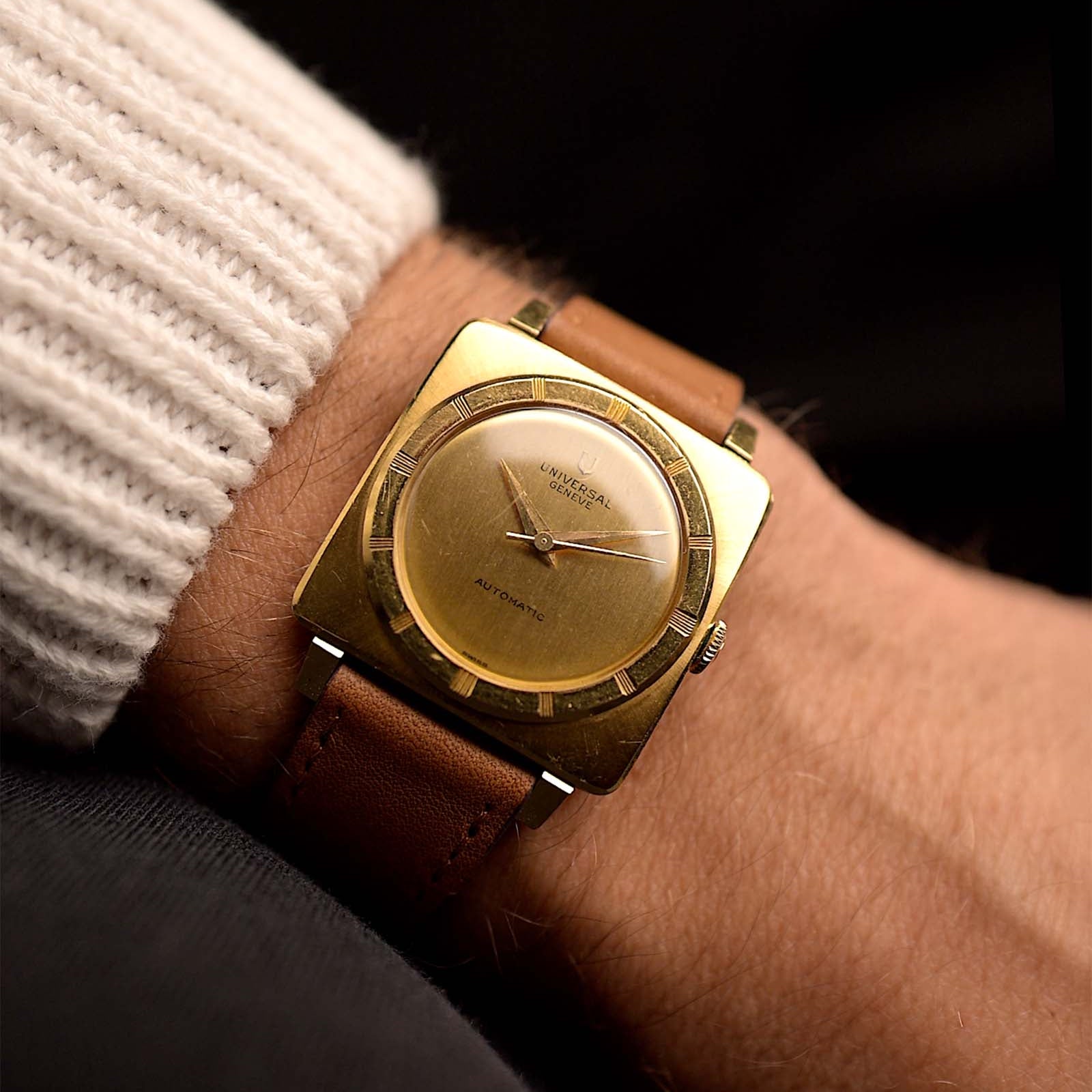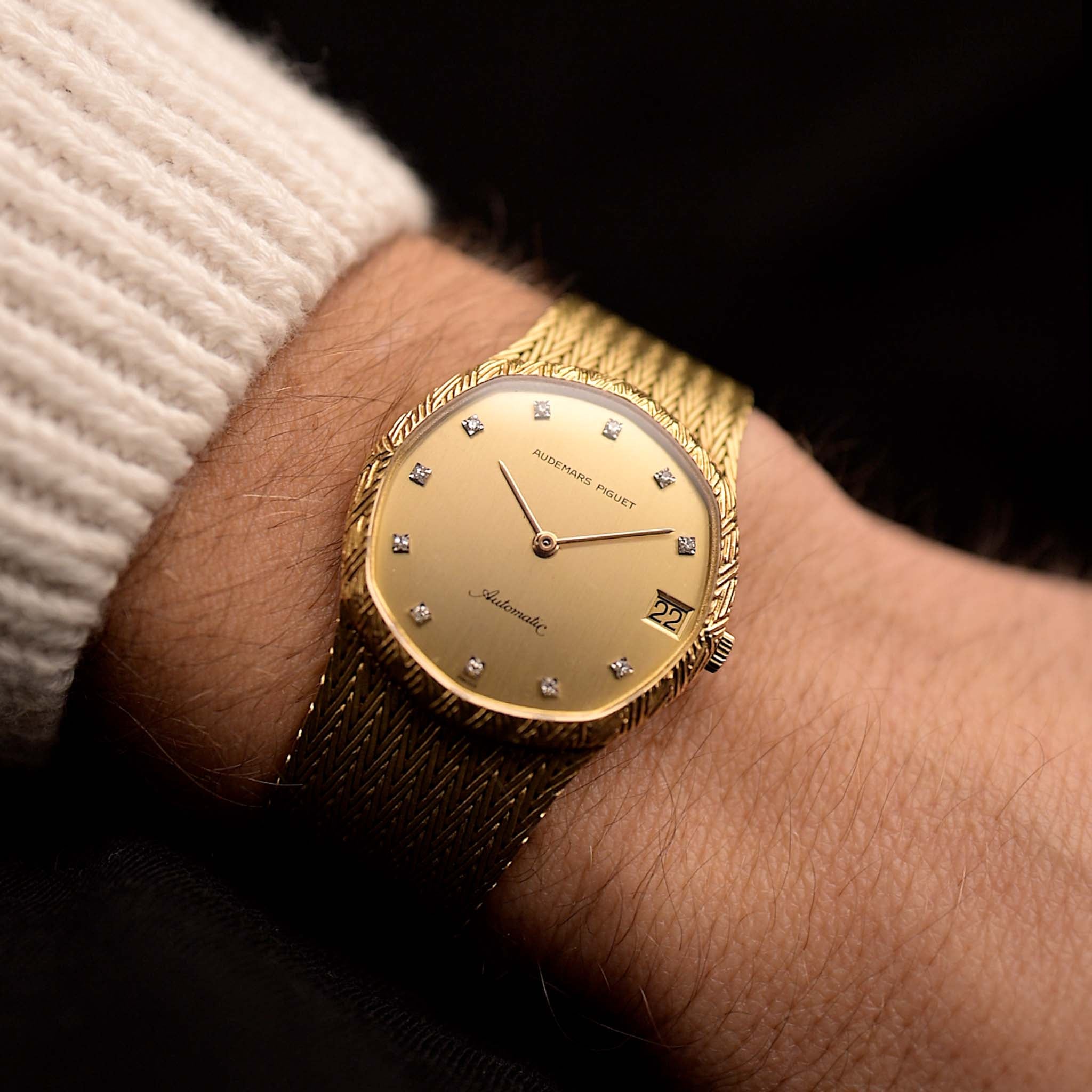2022 is the 50th anniversary of the Royal Oak, an icon that "was ahead of its time". That's a sentiment you probably have heard before. So this legend likely has been a blueprint for other pieces to follow. But let's deconstruct this statement a bit further. What this means is there are two independent qualities of age. There is the physical age of a timepiece and there's the popular taste the design fits into best, the design age. And both are not necessarily the same. Let's take the AP Royal Oak 15202 for example - a modern Royal Oak introduced to celebrate the 40th anniversary of the original 5402 - a watch that speaks the exact same design language yet is 40 years younger.
January 04, 2022
50 Years Royal Oak - The Quantitative Heritage of an Icon
 Marcus Siems @siemswatches
Marcus Siems @siemswatches
Collector, Author, Data Analyst
It's 2022, or in other words the 50th anniversary of the Royal Oak. 50 years of the first luxury sports watch. A timepiece that truly proved its timeless appeal and has been a design blueprint for many pieces to follow. A legend that back in 1972 has been ahead of its time.
"Ahead of it's time"... What does that actually mean? Let's deconstruct this statement a bit further. It means that there are two independent qualities of age. There is the physical age of a timepiece and there's the popular taste the design fits best, the Zeitgeist or design age. And both are not necessarily the same. Let's take the AP Royal Oak 15202ST for example - a modern Royal Oak introduced to celebrate the 40th anniversary of the original 5402 - a watch that speaks the same design language yet is 40 years younger[1].
 The idea vs. the execution of the Royal Oak 5402. Photo courtesy of Audemars Piguet©.
The idea vs. the execution of the Royal Oak 5402. Photo courtesy of Audemars Piguet©.
So what is the design age of the Royal Oak 5402/15202? This clearly is an elusive concept that is difficult to describe. However, that's exactly why we are here: to quantify what is hard to be put into words. Fortunately, with the data we have we can compare the key elements of Royal Oak and compare it to the rest of the vintage watch world of the last 80 years[2]. When combining all single details of a watch we might be able to get a statistical grip on this latent construct.
Checking out all different aspects of the design of a watch at once can be confusing. In our dataset alone, we are looking at the distributions of the Royal Oaks watch-type, dial color, case-shape and size, hand style and amount, marker style, numeral count and layout, bracelet and material. And every single of these features holds a bit of information about how much this part relates to a certain epoch... a tremendous amount of data to digest all at once. Normally not a humanly possible task to make sense of all this. However, when we combine all these elements we can establish a good and novel estimate of a watches design age: I call it the Heritage Score.
 Figure 5. Heritage Score of the AP Royal Oak 5402A plotted on top of all distribution underlying this statistic. Photo courtesy of Audemars Piguet©.
Figure 5. Heritage Score of the AP Royal Oak 5402A plotted on top of all distribution underlying this statistic. Photo courtesy of Audemars Piguet©.
The Heritage Score speaks for itself: The Royal Oak 5402, presented in 1972, actually best represents the early 1980s. The peak is in 1983 meaning that the 5402A was at least ten years ahead of its time. But if we check the graph more closely it overall fits very well into 1980 onwards.
I'd like to make the point that the design age is a completely data-driven concept; it is the representation of a watches appearance rather than its physical age. This is of course an abstract assessment but one that gives us a grip on a holistic description of watch design. The Heritage Score makes it possible to quantify the difference in design between any two watches without deconstructing it into its parts. That alone appears to me like an extremely intriguing and unheard of angle to look at all the watches we love so dearly and paves the way for so many cool new analyses to come.
 "It takes more than money to wear the Royal Oak" - vintage Audemars Piguet advertisement[6]
"It takes more than money to wear the Royal Oak" - vintage Audemars Piguet advertisement[6]
But coming back to the Royal Oak, the watch that was ahead of its time. Now the question is how valid are the numbers I display here? The 5402 is representing the early 1980s and onwards. Seeing the transition of the watch world in early 1970s this makes a lot of sense. With the Quartz-crisis eating up traditional Swiss watch manufacturers the industry had to change to stay alive[3,4]. It was either traditionalism, repeating the credo that mechanical watches have been around for hundreds of years invoking nostalgia, or the other extreme in breaking with old habits to survive the rise of cheap electronic movements[5].
It definitely was the latter approach that Audemars Piguet took with the Royal Oak but it most likely was the move that saved the entire company in the end. And if something is so unconventionally new and revolutionary it takes time until the market picks up on such a trend.
The Royal Oak: Gerald Gentas masterpiece and Audemars Piguets lifeboat. The origin of the story might be in a time of uncertainty but its legacy is only success. The 5402 was the strike of genius that redefined the watch world.
All about the Royal Oak 5402 here:
Part I - Taking Roots in Modern Horology
Part II - A Trendsetting Dial
Part III - A Creative Dial
Part IV - The Bolt Case Design
Part V - Design Heritage
References
[1] History of the Audemars Piguet Royal Oak; Alessandro Mazzardo, TimeAndWatches;
https://www.timeandwatches.com/p/history-of-audemars-piguet-royal-oak.html
[2] Watches from Chrono24, extracted 2020 Nov. 29th; Karlsruhe, Germany;
[3] The Quartz Crisis; Caitlyn Bazemore, CrownAndCaliber;
https://blog.crownandcaliber.com/the-quartz-crisis/
[4] Four Revolutions – Part 1: A Concise History Of The Quartz Revolution; Joe Thompson, Hodinkee;
https://www.hodinkee.com/articles/four-revolutions-quartz-revolution
[5] Four Revolutions – Part 2: A Concise History Of The Mechnical Watch Revolution (1976-1989); Joe Thompson, Hodinkee;
https://www.hodinkee.com/articles/four-revolutions-mechanical-watches-part-one
[6] Vintage Audemars Piguet advertisements - a Large collection; Millenary Watches;
https://millenarywatches.com/audemars-piguet-advertisements/
All rights on text and graphics reserved to the Author.




























1 comment
Fantastic Article Marcus! Learned a lot.
Leave a comment